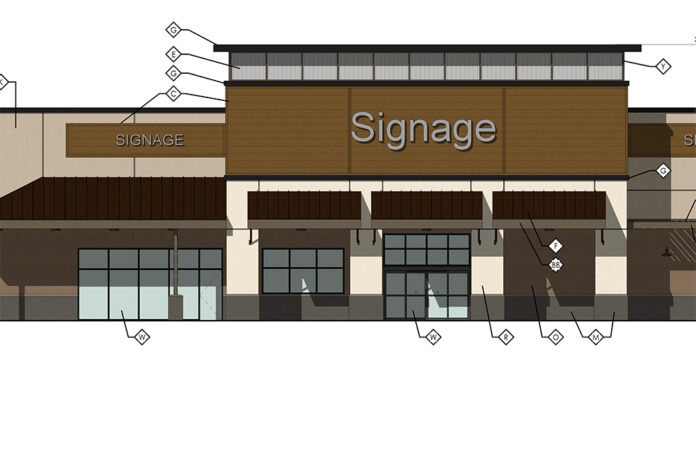
What do Maricopans want more than anything?
More shopping and restaurants.
So why aren’t they getting them?
Among the reasons is there simply isn’t enough retail space, according to experts.
A search on commercial real estate site Loopnet.com in November showed just seven retail spaces available for lease in Maricopa —two of which have yet to be built.
One of the seven is the 2,800-square-foot former Sunrise Diner site in Maricopa Marketplace, which is listed for lease at $25 per square foot per year. That makes the monthly rent more than $5,800.
But the lease type is “triple net,” a commercial real estate term denoting three expenses — property insurance, maintenance and taxes — that are added to the lease price by landlords. With the triple-net costs included, the Sunrise Diner space would run more than $7,000 a month.
Commercial Café, another website specializing in commercial real estate, shows five available retail spots. Three of those are 6,595-square-foot storefronts in Edison Pointe listed at $35 per square foot. That makes the annual lease payment $230,825, or $19,235 per month. With triple-net terms, the rate is more than $24,000 per month.
Commercial real estate experts say Maricopa is a good market for retail but it‘s youthfulness influences pricing.
Trent Rustan, vice president of retail sales and leasing for Commercial Properties Inc., has worked the Maricopa retail market for years and was a member of the development team for the Shops at Maricopa Fiesta, which includes McDonalds, Brooklyn Boys Pizzeria and Panda Express.
He agrees Maricopa’s youth works against it.
“I try to explain to tenants looking at Maricopa that it is a relatively new community,” Rustan said. “New communities usually have a higher cost of development because of infrastructure, newer design elements, the cost of bringing water and power to the site. It creates a little bit of a cost-of-development premium.”
Rustan said the same holds true in other newly developed areas like Surprise, Queen Creek and SanTan Village, which are considered comparable to Maricopa.
“When you look at new development in Queen Creek and other comparable areas, like Surprise, or anything relatively new where they had to meet new building codes, construction specs and the like, that cost of development is passed on to the tenants,” he said. “What Maricopa is missing is 40 to 50 years of additional development and infrastructure. There’s a lack of competition in that area and demand for retail has been outpacing the supply. That’s what is creating that higher cost.”
When Sunrise Café owner Billy Godwin posted on Facebook in July he was closing the restaurant, he wrote it was due to “the decline of revenue by about 50% and the current landlords unwilling to work on a solution nor use our $15,000 deposit given at the time of purchase to help in such instances.”
Godwin told InMaricopa that with the triple-net expenses — the lease cost him more than $7,000 per month, more than a similarly-sized space in Ahwatukee would cost, he said.
“It’s unfortunate, but we’ve lost a lot of mom-and-pop businesses here in town over the years, going all the way back to Ramsey’s and Teakwoods and Mama T’s Pizza,” Godwin said. “We’ve lost a lot of good dinner places because they just can’t keep up with the rent and the landlords aren’t willing to work with us.”
Jason Fessinger, a senior vice president at Western Retail Advisors, who has the listing for Maricopa Fiesta, has watched rents skyrocket over the past four years.
“Maricopa has experienced some of the greatest amount of rent growth of any submarket in Arizona,” Fessinger said. “The opportunities down there are just great for growth. Maricopa was a hidden gem till a few years ago. But after the recession, it has grown at a meteoric pace. It’s gotten a lot of attention. A lot of developers are interested in the area and so are a lot of national retailers, as you’ve seen with some of the new projects coming to town.”
When his client purchased Maricopa Fiesta four years ago, Fessinger said rents were about $18 to $20 per square foot. Now they are $26 to $28 per foot, an increase of about 40%.
Differing opinions
Some real estate experts, like Nick DeDona, a leasing agent with Phoenix Commercial Advisors, who worked on the lease-up at Sonoran Creek and represents Cobblestone Fiesta, feel that while the retail rental costs have escalated in Maricopa, as they have everywhere, business owners are getting value for those prices.
“You’ve got a growing city with great incomes, restaurants that are all doing really well. The tenants have mostly been really successful and happy, and are meeting or exceeding projections,” he said. “Vacancy is very low. We just need more retail down there. There is a second-generation restaurant space (Sunrise Diner) for rent in the mid-$20s. That’s unheard of. They will lease that in no time … It will be leased by the end of the year, and they will have multiple offers, I’m sure.”
DeDona considers unfinished space in the city to be affordable.
“We have a 2,400-square-foot, gray-shell space (essentially four walls and a ceiling with no improvements) in the center where Ace Hardware is, leasing to an Asian restaurant for similar to the Sunrise Diner price,” he said. “In Ahwatukee or Chandler, that space would be $28 to $33 per foot, plus triple-net.”
He agreed with Rustan that Maricopa’s youth as a city is a factor, but for a different reason.
“Taxes on new developments are higher simply because they are new,” he said. “The owners don’t have 40 years of amortization to bring those costs down.”
DeDona said new space in Sonoran Creek is leasing for about $35 per square foot. For a site with a drive-through add a premium to that.
Retail wave on horizon
One project that seems destined to spur retail development is the proposed PHX Surf Park at State Route 238 and North Loma Road, according to Rustan.
“I’m really excited about that because it brings in a whole different spectrum of customers, travel consumers, to the city,” Rustan said. “It’s a completely different realm of retail, almost along the entertainment spectrum. I think it will allow Maricopa to capture a whole different market segment that doesn’t exist yet.”
Rustan said Maricopa could use at least another shopping center or two, but what the city really needs is to shift its growth to other areas.
“All the residential growth on the east side of Maricopa, those citizens are literally starving for more services and businesses to help them,” he said. “They need restaurants, convenience stores, things that take care of their everyday needs, and they also need a lot of things that are not retail.
“Maricopa doesn’t need a lot of anything. It needs a little of everything.”
Despite any issues they see in Maricopa, all three commercial real estate agents say they would tell a business owner they’re bullish on the city.
“You’ve got overall retail occupancy that exceeds 97% and a great community that’s well-educated with a median household income north of $75,000 and a lot of great success stories in Maricopa.”
Fessinger was more succinct with advice he’d give a business looking to expand into the city.
“I’d tell them they should.”






![MHS G.O.A.T. a ‘rookie sleeper’ in NFL draft Arizona Wildcats wide receiver Jacob Cowing speaks to the press after a practice Aug. 11, 2023. [Bryan Mordt]](https://www.inmaricopa.com/wp-content/uploads/2024/04/cowing-overlay-3-218x150.png)





![Alleged car thief released without charges Phoenix police stop a stolen vehicle on April 20, 2024. [Facebook]](https://www.inmaricopa.com/wp-content/uploads/2024/04/IMG_5040-218x150.jpg)




